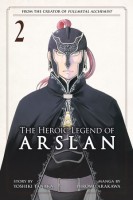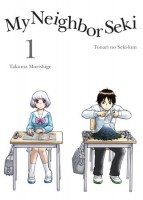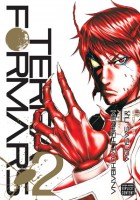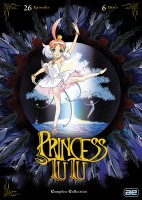My News and Reviews
The Female Goth Mangaka Carnival wrapped up last week. In addition to my recent Spotlight on Mitsukazu Mihara, I also contributed two other related posts. The first was Experiments in Manga’s latest giveaway. There’s still time to enter for a chance to win Junko Mizuno’s Cinderalla. I also posted a review of Asumiko Nakamura’s manga Utsubora: The Story of a Novelist. It’s a dark and twisting tale, and one that I come to love a little more each time I read it. Completely unrelated to the Carnival, last week I also reviewed Yasunari Kawabata’s The Sound of the Mountain, a classic novel about growing older and family relationships.
Elsewhere online, Viz announced that it will be bringing Shotaro Ishinomori’s The Legend of Zelda: A Link to the Past back into print, which I’m looking forward to a great deal. Media scholar Henry Jenkins is posting lengthy, in-depth interview with Patrick W. Galbraith, “In Defense of Moe,” talking about manga, anime, and otaku studies (Part 1|Part 2|Part 3|Part 4|Part 5|Part 6). Digital Manga has launched its next Tezuka Kickstarter to publish Osamu Tezuka’s two-volume Alabaster with a stretch goal to reprint Swallowing the Earth (again). A recent update for Digital Manga’s Finder Kickstarter includes a link to a list of boys’ love titles that are currently in stock. Perhaps most importantly, it indicates which manga are available in limited quantities.
Quick Takes
 The Heroic Legend of Arslan, Volume 2 by Hiromu Arakawa. The particular weakness of the second volume of The Heroic Legend of Arslan is that while the battles and sieges are proceeding at a good pace—and Arakawa’s fight and action sequences are excellent—there is a relative lack of character development. Unsurprisingly, considering that the manga takes place during a time of war, there are important, dramatic deaths, but emotionally they aren’t especially effective since readers hadn’t had the opportunity to really get to know those involved before their demise. At this point, many of the antagonists and even a fair number of the series’ protagonists are missing complexity and nuance. Thankfully Arslan himself does show a little growth by the end of the volume, but attention is mostly given to the war being fought and some of the political intrigue behind it all. Granted, those are very important aspects of the series since they are what Arslan must overcome. However, I am hoping that future volumes will spend more time examining the characters as people. Intense, bloody battles are all well and good, but I want to more completely understand the motivation and drive behind them.
The Heroic Legend of Arslan, Volume 2 by Hiromu Arakawa. The particular weakness of the second volume of The Heroic Legend of Arslan is that while the battles and sieges are proceeding at a good pace—and Arakawa’s fight and action sequences are excellent—there is a relative lack of character development. Unsurprisingly, considering that the manga takes place during a time of war, there are important, dramatic deaths, but emotionally they aren’t especially effective since readers hadn’t had the opportunity to really get to know those involved before their demise. At this point, many of the antagonists and even a fair number of the series’ protagonists are missing complexity and nuance. Thankfully Arslan himself does show a little growth by the end of the volume, but attention is mostly given to the war being fought and some of the political intrigue behind it all. Granted, those are very important aspects of the series since they are what Arslan must overcome. However, I am hoping that future volumes will spend more time examining the characters as people. Intense, bloody battles are all well and good, but I want to more completely understand the motivation and drive behind them.
 My Neighbor Seki, Volume 1 by Takuma Morishige. I was originally only vaguely curious about My Neighbor Seki, but after watching the absolutely delightful anime adaptation last year, I knew it was a series that I couldn’t miss. The premise is deceptively simple: Yokoi sits in the last row of seats in her classroom right next to Seki, a boy who is always goofing around at his desk. Yokoi finds this incredibly distracting, especially since the ways in which Seki amuses himself can be spectacularly elaborate. Often she’s astounded by Seki’s audacity, but on occasion she can’t help but to join in or interfere with what he’s doing. Of course this means she’s often the one in danger of getting into trouble with the teachers for not paying attention in class. The individual chapters in My Neighbor Seki may be short, but the sheer creativity displayed by Morishige, and in turn by Seki, is quite impressive. The original My Neighbor Seki manga is just as wonderful as the anime was; I’ll definitely be following the manga to its end. (In Japan the series is currently ongoing with six volumes having so far been released.) My Neighbor Seki is funny and charming and a marvelously entertaining read.
My Neighbor Seki, Volume 1 by Takuma Morishige. I was originally only vaguely curious about My Neighbor Seki, but after watching the absolutely delightful anime adaptation last year, I knew it was a series that I couldn’t miss. The premise is deceptively simple: Yokoi sits in the last row of seats in her classroom right next to Seki, a boy who is always goofing around at his desk. Yokoi finds this incredibly distracting, especially since the ways in which Seki amuses himself can be spectacularly elaborate. Often she’s astounded by Seki’s audacity, but on occasion she can’t help but to join in or interfere with what he’s doing. Of course this means she’s often the one in danger of getting into trouble with the teachers for not paying attention in class. The individual chapters in My Neighbor Seki may be short, but the sheer creativity displayed by Morishige, and in turn by Seki, is quite impressive. The original My Neighbor Seki manga is just as wonderful as the anime was; I’ll definitely be following the manga to its end. (In Japan the series is currently ongoing with six volumes having so far been released.) My Neighbor Seki is funny and charming and a marvelously entertaining read.
 Secrecy of the Shivering Night by Muku Ogura. After reading the first volume of the short boys’ love series Castle Mango, I decided to seek out more of the artist’s work. Currently the only other manga of her’s available in print in English is Secrecy of the Shivering Night. Unlike Castle Mango, Ogura wrote the stories collected in Secrecy of the Shivering Night in addition to illustrating them. The volume includes four short boys’ love manga which, other than tending towards the more sweet or romantic and having slightly peculiar lead characters, are all unrelated. The setup for the titular story is perhaps the most curious and seemingly far-fetched—a young man who is afraid of bright lights and another young man who is afraid of the dark end up as dorm roommates—but the resulting relationship dynamic is surprisingly satisfying. Their opposite phobias, but even more so their opposite personalities, make them an adorable couple. Secrecy of the Shivering Night isn’t an especially outstanding collection, but the stories are generally cute and a little bit quirky, which are characteristics I happen to particularly enjoy, and Ogura’s artwork has a pleasant softness to it.
Secrecy of the Shivering Night by Muku Ogura. After reading the first volume of the short boys’ love series Castle Mango, I decided to seek out more of the artist’s work. Currently the only other manga of her’s available in print in English is Secrecy of the Shivering Night. Unlike Castle Mango, Ogura wrote the stories collected in Secrecy of the Shivering Night in addition to illustrating them. The volume includes four short boys’ love manga which, other than tending towards the more sweet or romantic and having slightly peculiar lead characters, are all unrelated. The setup for the titular story is perhaps the most curious and seemingly far-fetched—a young man who is afraid of bright lights and another young man who is afraid of the dark end up as dorm roommates—but the resulting relationship dynamic is surprisingly satisfying. Their opposite phobias, but even more so their opposite personalities, make them an adorable couple. Secrecy of the Shivering Night isn’t an especially outstanding collection, but the stories are generally cute and a little bit quirky, which are characteristics I happen to particularly enjoy, and Ogura’s artwork has a pleasant softness to it.
 Terra Formars, Volumes 2-4 written by Yu Sasuga and illustrated by Ken-ichi Tachibana. If the first volume of Terra Formars largely felt like a stand-alone prequel, that’s because it was. The second volume begins twenty years later. An exceptionally fatal disease is becoming more prevalent on Earth which requires a new mission to Mars in order to research a cure. Shokichi Komachi, one of the two survivors from the previous Mars mission, leads a crew of one hundred men and women genetically modified to survive the conditions and lifeforms found on the planet. Terra Formars continues to be extraordinarily violent with an incredibly high body count, though considering the first volume I was actually surprised by how many people are left alive by the end of the fourth. It seems as though there might be an actual plot to Terra Formars, but it’s mostly just an excuse to show epic, over-the-top hand-to-hand combat between opponents with astounding, superhuman abilities. I still dislike the visual design of the humanoid cockroaches immensely, but at least there’s an attempt in these volumes to better explain their appearance. The portrayal of women in the manga has slightly improved, as well.
Terra Formars, Volumes 2-4 written by Yu Sasuga and illustrated by Ken-ichi Tachibana. If the first volume of Terra Formars largely felt like a stand-alone prequel, that’s because it was. The second volume begins twenty years later. An exceptionally fatal disease is becoming more prevalent on Earth which requires a new mission to Mars in order to research a cure. Shokichi Komachi, one of the two survivors from the previous Mars mission, leads a crew of one hundred men and women genetically modified to survive the conditions and lifeforms found on the planet. Terra Formars continues to be extraordinarily violent with an incredibly high body count, though considering the first volume I was actually surprised by how many people are left alive by the end of the fourth. It seems as though there might be an actual plot to Terra Formars, but it’s mostly just an excuse to show epic, over-the-top hand-to-hand combat between opponents with astounding, superhuman abilities. I still dislike the visual design of the humanoid cockroaches immensely, but at least there’s an attempt in these volumes to better explain their appearance. The portrayal of women in the manga has slightly improved, as well.
 Princess Tutu directed by Junichi Sato. I picked up Princess Tutu more on a whim than anything else when I saw it on super sale. Although I vaguely remembered hearing good things about the anime, I honestly didn’t know much about the series. I’m very glad that I own it because Princess Tutu is marvelous. I do find it somewhat difficult to describe in a way that does the justice, though. The story follows a girl called Duck who really is a duck. She’s under an enchantment that allows her to not only take human form but to also become the magical Princess Tutu. Through the power of her dance she restores the shattered heart of a prince who had sacrificed himself to save others. That all might sound a little strange, and parts of the anime are admittedly weird, but the series is also very good. Stories are just as real as reality in Princess Tutu, and just as potent if not more so. Bits and pieces of classic ballets, operas, and plays can be found throughout the series all mixed together to form a unique work. I absolutely loved the anime’s use of orchestral works not just as background music but as meaningful additions to the story, emphasizing the significance of the characters and of their actions and, for those who are familiar with the pieces, even revealing some of the plot.
Princess Tutu directed by Junichi Sato. I picked up Princess Tutu more on a whim than anything else when I saw it on super sale. Although I vaguely remembered hearing good things about the anime, I honestly didn’t know much about the series. I’m very glad that I own it because Princess Tutu is marvelous. I do find it somewhat difficult to describe in a way that does the justice, though. The story follows a girl called Duck who really is a duck. She’s under an enchantment that allows her to not only take human form but to also become the magical Princess Tutu. Through the power of her dance she restores the shattered heart of a prince who had sacrificed himself to save others. That all might sound a little strange, and parts of the anime are admittedly weird, but the series is also very good. Stories are just as real as reality in Princess Tutu, and just as potent if not more so. Bits and pieces of classic ballets, operas, and plays can be found throughout the series all mixed together to form a unique work. I absolutely loved the anime’s use of orchestral works not just as background music but as meaningful additions to the story, emphasizing the significance of the characters and of their actions and, for those who are familiar with the pieces, even revealing some of the plot.

Man, I should re-watch Princess Tutu. I mean, I’ve seen it five times, but it’s also been several years since the last time. It really is a masterpiece of an anime. But don’t go seeking out the manga unless you want pure, undiluted disappointment. I don’t understand why they sometimes try to make full anime series into two-volume manga, it’s not going to work, yet they’ve tried so many times.
I decided to get some manga bags this week. I like the idea of putting some of my favorite and rare series, like Banana Fish, into protective bags, but when I go to re-read them, it’s going to be a royal pain. And, although small, it does take up more room on the shelves. So I’m still debating how I’m going to like these.
Princess Tutu is definitely an anime that I’ll be watching again. It’s all sorts of wonderful. And thanks for the warning about the manga. I was surprised to discover that it was only two volumes when I looked into it. There’s just no way all of the complexities of the anime could fit into that short of a series!
Except for a few floppies and individual issues, I generally don’t bag most of my manga. Though for some of the hard-to-replace volumes it might not be a terrible idea depending on your environment. You’ll want to be careful about the kind of plastic material you use, though. Definitely avoid PVC; polyethylene and polypropylene are safe. If you store your books in a really humid area, a plastic bag can actually be bad for them because it will trap moisture inside. The plastic can help prevent some shelf wear, but the first step in preserving printed material is to store it in a dry, cool place. *removes archivist/preservationist’s hat*
Man, now I think you should try the Princess Tutu manga, I’m curious just how badly it murders the anime. For some reason though, the second book can be really expensive when it’s so clearly just not worth it. I remember, back in high school, I took Princess Tutu over to my friend’s house to watch, and her little sister proudly proclaims “that’s not how it happened in the manga!” forcing me to explain that not all manga come first.
Have you seen Magic User’s Club? It’s also Junichi Sato (one of my fav shojo director) and has the same character designer, causing me to look at Sae and go “Duck!” all the time. It’s a fun series in its own right, though it’s no Princess Tutu. I rather miss that 6 ep OVA format the 90s was so fond of.
It’s currently cool and dry here, usually is (I may open the window in the summer, letting in some humidity because Maryland is nothing if not ungodly humid sometimes in the summer, but it’s winter so it’s nice and dry and always cool), and they don’t see much sun either (and they never see direct sunlight, I’ve seen sun damaged things, poor Monkey Island disc sleeve from the 90s), it’s a good environment for books actually. I got special manga bags online, polypropylene, easy to find all over eBay (didn’t know to avoid PVC though, thanks for that heads up!) But I am nothing if not paranoid it seems.
no no no, stay away from Princess Tutu manga! It is terrible!
just super-generic shoujo fluff
Hahaha! Duly noted!
I have not seen Magic User’s Club, but maybe I should look into it. I’ll admit, I’ve only recently started to really pay attention to directors and what they’ve worked on. ^_^;
Ah, you’ve hit upon the other major preservation issue! Light, and especially sunlight, can be very damaging. Sounds like you’ve got a pretty good setup for your books. :)